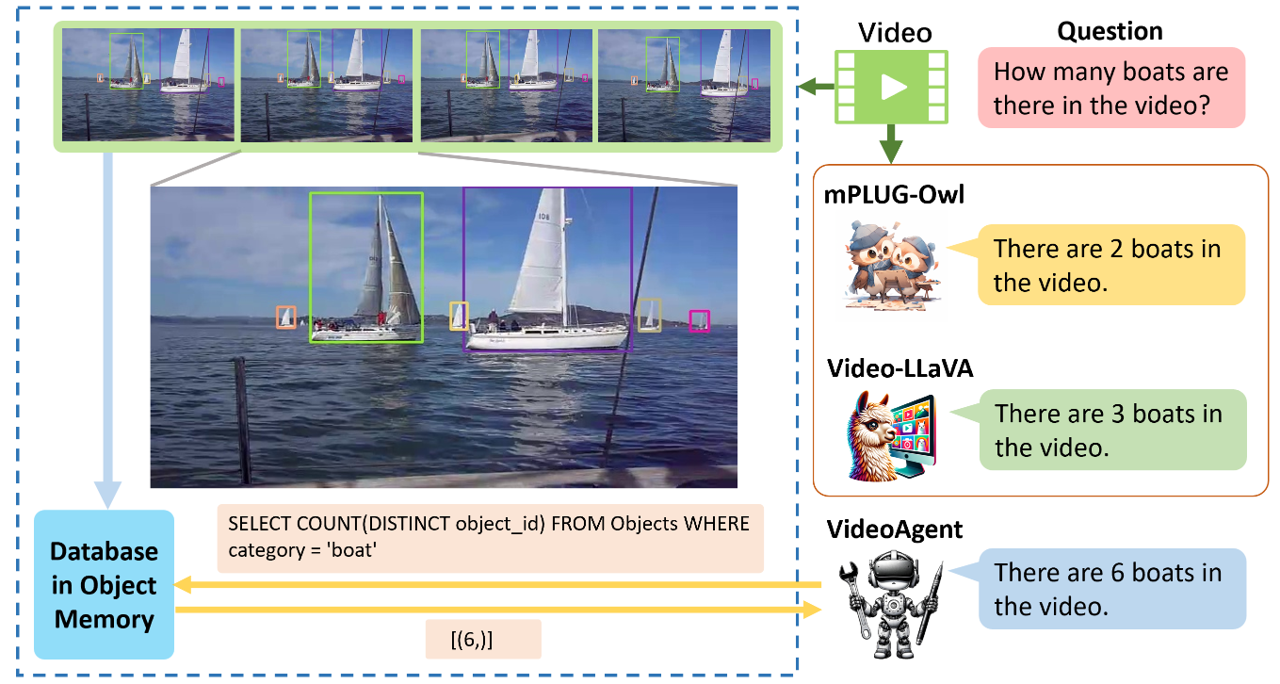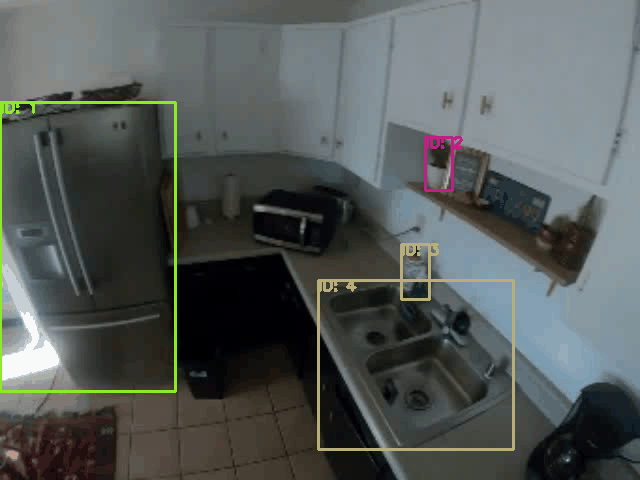VideoAgent: A Memory-augmented Multimodal Agent for Video Understanding
ECCV 2024


We explore how reconciling several foundation models (large language models and vision-language models) with a novel unified memory mechanism could tackle the challenging video understanding problem, especially capturing the long-term temporal relations in lengthy videos. In particular, the proposed multimodal agent VideoAgent: 1) constructs a structured memory to store both the generic temporal event descriptions and object-centric tracking states of the video; 2) given an input task query, it employs tools including video segment localization and object memory querying along with other visual foundation models to interactively solve the task, utilizing the zero-shot tool-use ability of LLMs. VideoAgent demonstrates impressive performances on several long-horizon video understanding benchmarks, an average increase of 6.6% on NExT-QA and 26.0% on EgoSchema over baselines, closing the gap between open-sourced models and private counterparts including Gemini 1.5 Pro. The code will be released to the public.

Given a video and a question, VideoAgent has two phases: memory construction phase and inference phase. During the memory construction phase, structured information is extracted from the video and stored in the memory. During the inference phase, a LLM is prompted to use a set of tools interacting with the memory to answer the question.
VideoAgent has a temporal memory and an object memory. By slicing the video into 2-second segments, the temporal memory is designed to store the event descriptions of these segments generated by a video captioning model. Besides, the textual features and visual features of these segments are also stored in the temporal memory for similarity-based segment localization in the inference stage. The object memory stores all the objects with their information in a SQL database including: categories, CLIP features, and their appearing segments. The object information is achieved by object tracking with a unique re-identfication method proposed in this paper.

During the inference stage, 4 tools can be utilized by the LLM to gather video information required to answer the question. The 4 tools are:
The LLM agent will perform multiple steps towards the final answer. In each step, it will invoke a tool to gather information based on its reasoning and the results of the preivous steps. An example can be found as follows.

@inproceedings{fan2025videoagent,
title={Videoagent: A memory-augmented multimodal agent for video understanding},
author={Fan, Yue and Ma, Xiaojian and Wu, Rujie and Du, Yuntao and Li, Jiaqi and Gao, Zhi and Li, Qing},
booktitle={European Conference on Computer Vision},
pages={75--92},
year={2025},
organization={Springer}}